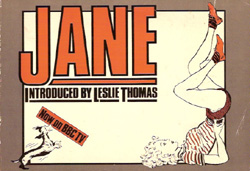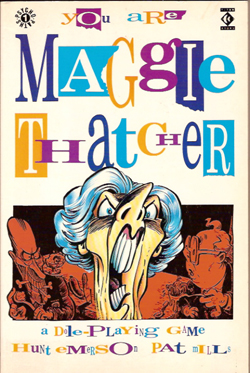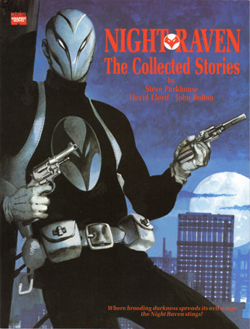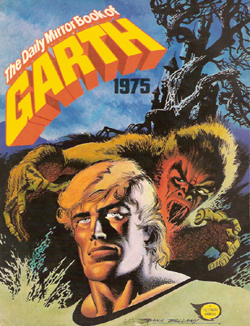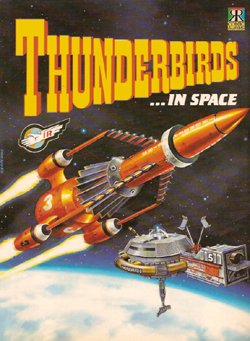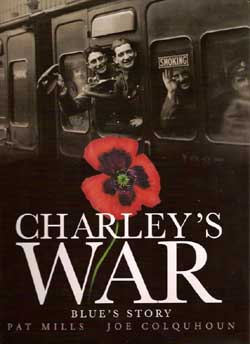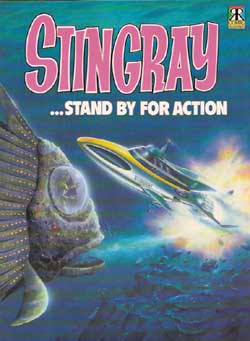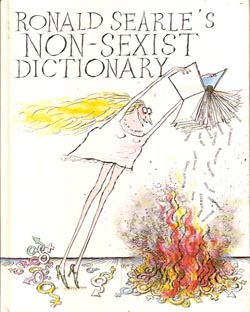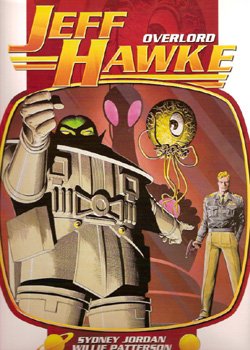
By Sydney Jordan & Willie Patterson (Titan Books)
ISBN: 978-1-84576-597-2
Finally back in print – and in Titan’s spiffy Deluxe hardback format – is this superb collection of strips from the only serious rival to Dan Dare in either popularity or quality, not just in Britain but in the entire world.
Sydney Jordan began his saga of the thinking man’s hero in the Daily Express on February 2nd 1954, writing the first few adventures himself. In 1956 his old school friend and associate Willie Patterson moved from Scotland to London and helped out with the fifth adventure ‘Sanctuary’, and scripted the next one ‘Unquiet Island’, whilst sorting out his own career as a freelance scripter for such titles as Amalgamated Press’s Children’s Encyclopaedia, Caroline Baker – Barrister at Law and eventually Fleetway’s War Picture Library series.
He continued to supplement and assist the artist intermittently (Jordan was never comfortable scripting, preferring to plot and draw the strips – another confederate of the time was Harry Harrison who wrote the ninth tale ‘Out of Touch’, which ran from October 10th 1957 – April 5th 1958) until, with the fourteenth tale, he assumed the writing chores on a full-time basis and began the strip’s Golden Age. He would remain until 1969.
‘Overlord’ began on February 10th 1960. In it, British Space Scientist Jeff Hawke meets for the first time a character who would become one of the greatest villains in pictorial fiction: Chalcedon, galactic criminal and would-be Overlord of Space.
When an alien ship crashes into the Egyptian desert, it reveals that two huge fleets of spaceships are engaged in a running battle within the Solar System, and the Earth is directly in their path. After interminable babble and shilly-shallying at the UN, Hawke convinces the authorities to let him take a party to the warring factions in the hope of diverting them from our poor, endangered world. What he finds is not only terrifying and fantastic but, thanks to Jordan’s magical illustration and Patterson’s thrilling, devastatingly wry writing, incredibly sophisticated and very, very funny.
Running until June 20th, it was followed by a much more traditional and solemn yarn. ‘Survival’ (21-June to December 12th 1960) follows the events of an interplanetary prang that severely injures Hawke’s assistant Mac Maclean. Repaired – and “improved†by the penitent extraterrestrials that caused the accident – Mac rejoins the Earth crew, but is no longer one of them. Moreover they are all still marooned on a desolate asteroid with no hope of rescue, and must use all their meagre resources to save themselves. This gritty tale of endurance and integrity was mostly illustrated by fellow Scot Colin Andrew as Sydney Jordan was busily preparing art for a proposed Jeff Hawke Sunday page, which never materialised, although that art was recycled as the eighteenth adventure ‘Pastmaster’.
It was a return to Earth and satirical commentary with the next tale ‘Wondrous Lamp’. Running from 13th September 1960 to 11th March 1961 it begins in second century Arabia when an alien survey scout crashed at the feet of wandering merchant Ala Eddin, briefly granting him great powers before his timely comeuppance. Nearly two thousand years later the ship – which looks a bit like a lamp – precipitates a crisis when its teleportation circuits lead to an invasion by a couple of million of the universe’s toughest warriors…
This brilliantly quirky tale, like all the best science-fiction, is a commentary on its time of creation, and the satirical view of Whitehall bureaucracy and venality, earthbound and pan-galactic, is a dry and cynical delight, which is as telling now as it was in the days before the Profumo Affair.
Chalcedon returns for the final tale in this volume. ‘Counsel For The Defence’ (13th March -2nd August 1961) sees Hawke and Maclean press-ganged into the depths of Intergalactic Jurisprudence as the Overlord, brought to Justice at last, chooses the Earthman as his advocate in the upcoming trial. Naturally he has a sinister motive and naturally nothing turns out as anybody planned or expected it to, but the art is breathtaking, the adventure captivating and the humour timeless.
Jeff Hawke is a revered and respected milestone of graphic achievement almost everywhere except its country of origin. Hopefully this latest attempt to reprint these gems will find a more receptive audience this time, and perhaps we’ll even get to see those earlier stories as well.
© 2007 Express Newspapers Ltd.

